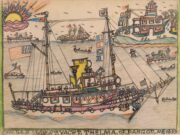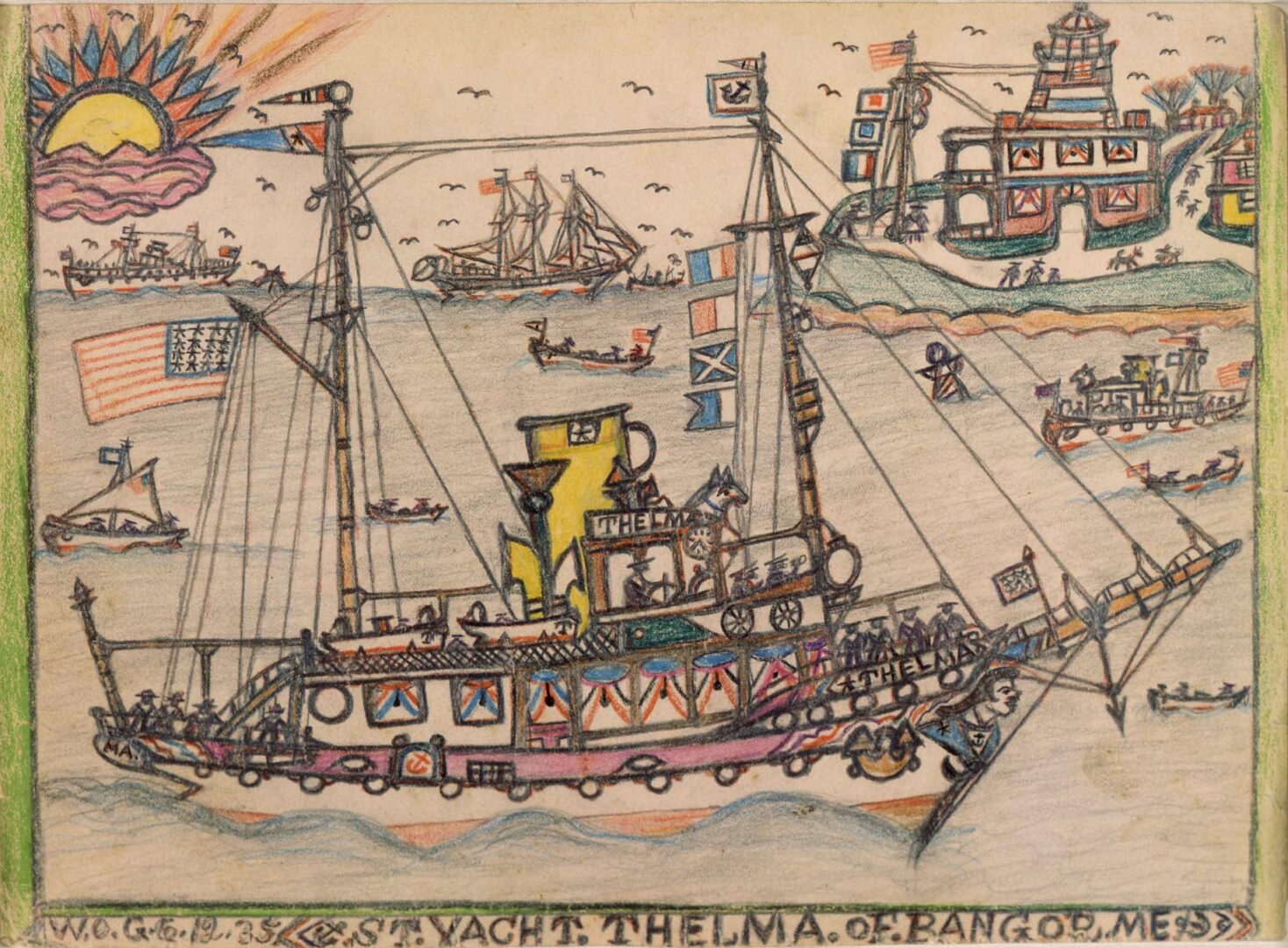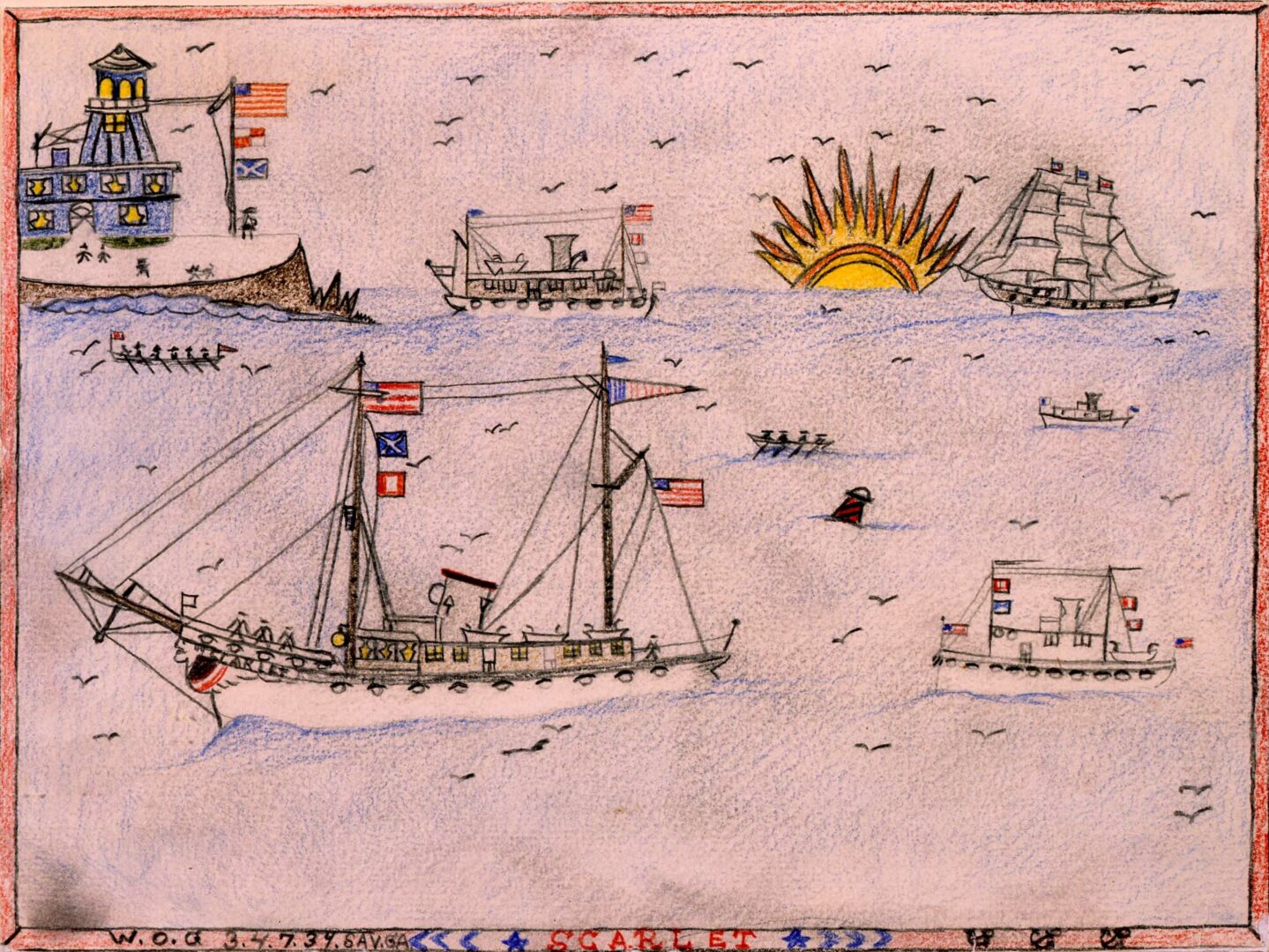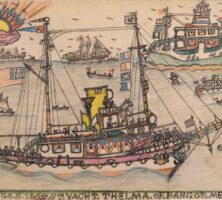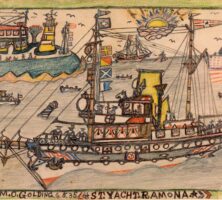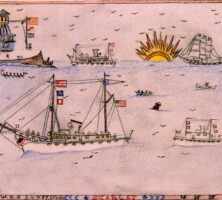Kidnapped from the Savannah waterfront when he was eight years old, William O. Golding chronicled his travels through a series of maritime drawings that he created near the end of his life while a patient at the U.S. Marine Hospital in Savannah. Between 1932 and 1939 he executed around sixty drawings, created from his memories of the ships he sailed and the ports of call he visited around the globe. Golding’s drawings reveal details of his remarkable life, as do the only two extant letters of this African American self-taught artist.
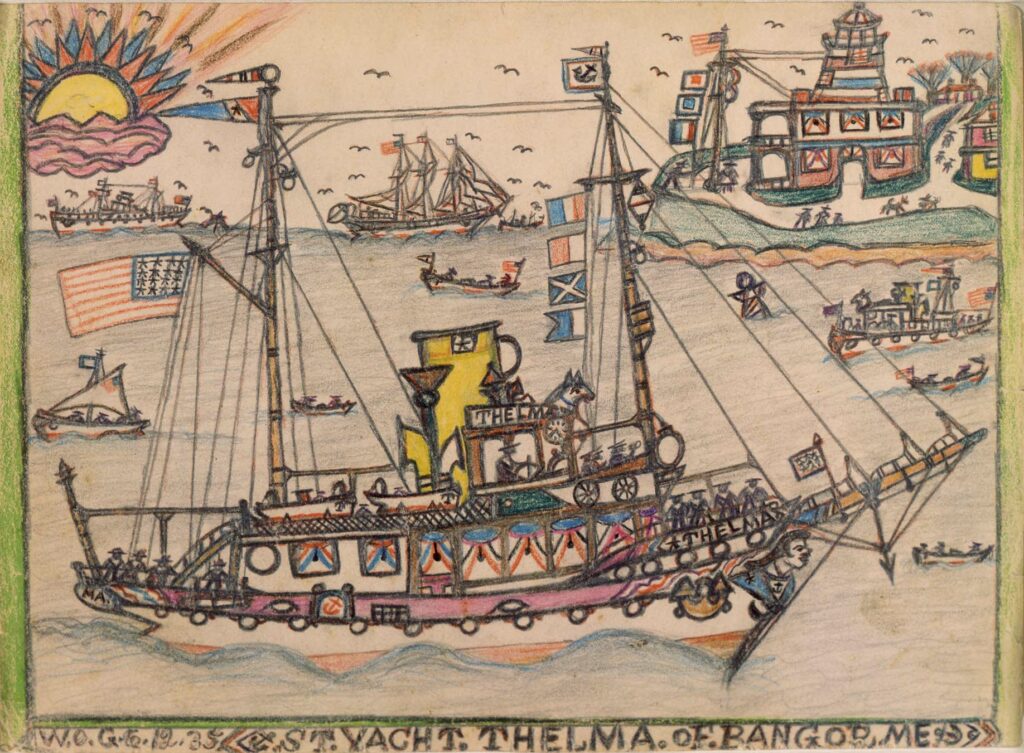
Courtesy of Morris Museum of Art
Golding was likely born on January 15, 1874. His future was determined on July 15, 1882. In a letter he wrote in 1932 to Margaret Stiles, the recreation director at the hospital and a member of the Savannah Art Club, he recalled the day that he and his cousin were strolling along the wharf in Savannah. According to Golding, the two youngsters passed the ship Wandering Jew and overheard Captain William Potter ask his wife, Polly, to select one of the boys. She chose Golding, who was invited aboard; by the time he wanted to leave, the ship was already out at sea. As he emerged from below deck, he saw the lighthouse on Tybee Island blinking in the distance. This was the beginning of Golding’s odyssey. He did not see his home again until a brief visit in 1904.
When he was in his fifties, Golding, whose nickname was “Deep Sea,” returned permanently to Savannah, as declining health forced him to remain on land. During the 1930s he was a patient intermittently at the U.S. Marine Hospital, where he received treatment for a chronic lung condition. (Records from the hospital, which accepted seamen, veterans, and government employees, state that he was born on January 15, 1874.) Stiles befriended Golding during his time at the hospital and encouraged him to draw. She supplied the paper, pencils, and crayons that he used to create the works of art inspired by his peripatetic life. Stiles also bought some of his drawings and arranged for the sale of others.
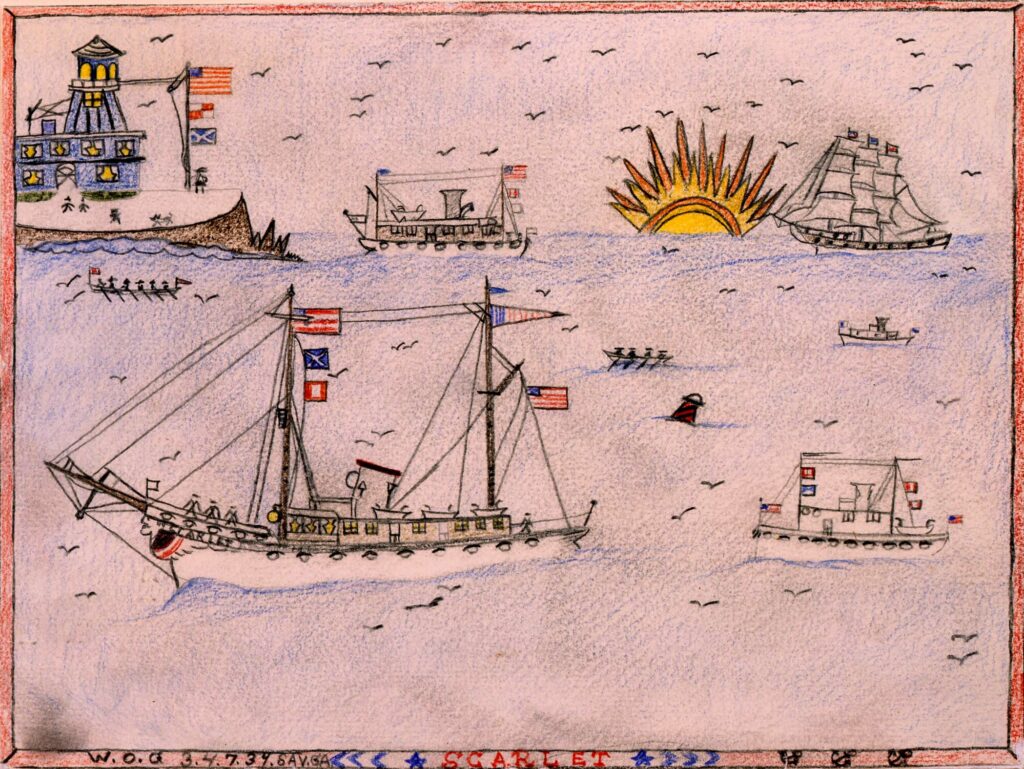
Courtesy of Morris Museum of Art
There are scanty details of the forty-nine years that Golding spent at sea. By his own account, he sailed the seven seas on a variety of vessels—merchant ships, whalers, and yachts. His duties aboard ship and the length of time he was associated with each vessel remain unknown. Although he recounted an arduous working life and complained that he never made a fortune, he basked in the experiences he gained. When he was fifty-nine, Golding admitted in a letter that he still sailed in his dreams and met his cronies there to swap yarns.
Golding executed all his drawings from memory. His ships are meticulously detailed, and the drawings often include specific information regarding captains or ports of origin. Port cities often appear similar at first glance, but careful observation reveals that Golding included distinctive topographical characteristics of the land. Certain stylistic elements—including flags, buoys, lighthouses, smaller vessels, people, animals, and a sun with triangularly pointed rays beckoning from behind a cloud—appear frequently in Golding’s work. As he diligently recorded his life in his drawings, he seems to have recalled only the happiest of times. The weather is always favorable, and the people, animals, and vessels are busy, robust, and productive.
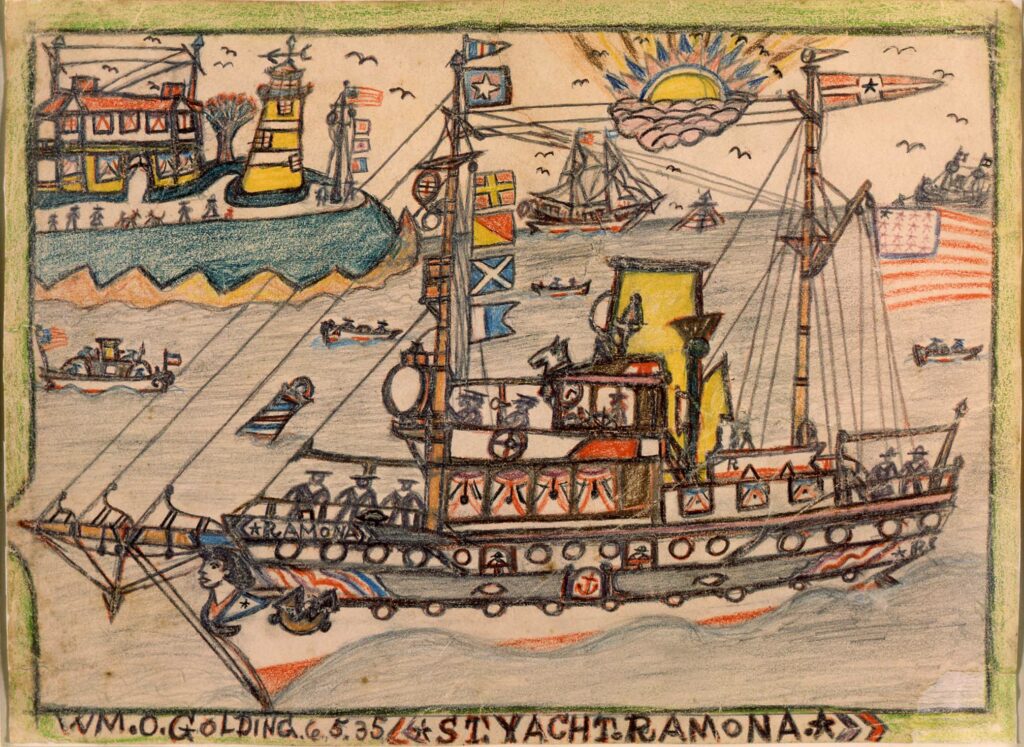
Courtesy of Morris Museum of Art
Golding stated that he had traveled the world and visited Africa, Asia, Australia, Central and South America, and Europe. He had sailed around Cape Horn and the Cape of Good Hope dozens of times. He was adamant about drawing only the places and vessels that he knew personally and refused to draw Bali or Hawaii, since he had not seen either place.
Given his geographical scrupulousness, it is curious that a few ships he could not possibly have seen, such as the Alabama, a Confederate ship used during the Civil War (1861-65) and the Ranger, a vessel used during the Revolutionary War (1775-83), were included in his drawings. Both ships were destroyed before his birth, but they were popularly known, and he may have recalled them from prints. Golding may have seen the USS Constitution when it visited Savannah in 1931. Copying a technique found in marine prints, he carefully colored in a frame and a nameplate (sometimes complete with drawn screw heads) at the bottom center of the work.
Information concerning Golding’s final years is also scarce. He appears as a resident of Savannah with his wife, Josephine, in the 1940 city directory. He died on August 25, 1943.
Although it is unknown how Stiles exhibited Golding’s drawings, several exhibitions of his work were mounted after his death. His drawings were included in the landmark exhibition Missing Pieces: Georgia Folk Art, 1770-1976, which traveled from the Atlanta History Center in Atlanta to the Telfair Museum of Art (later Telfair Museums) in Savannah to the Columbus Museum in Columbus. In 2000 the Telfair Museum of Art organized a retrospective exhibition, Hard Knocks, Hardship, and a Lot of Experience: The Maritime Art of William O. Golding, and the Morris Museum of Art in Augusta exhibited his work the following year in the show Maritime Memories.
Golding’s work is found in the permanent collections of the Georgia Museum of Art in Athens and of the Morris Museum of Art, which holds thirty of his drawings—nearly half his total output.


